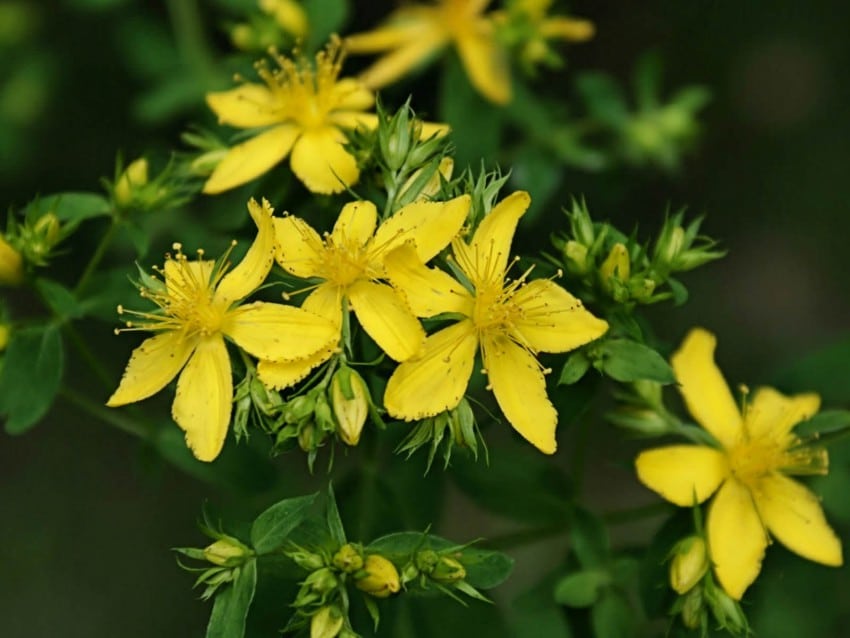Growing St John’s wort is not difficult, it’s an undemanding plant. Learn how to grow St John’s wort in this article.
USDA Zones: 5 to 9
Difficulty: Easy
Other Names: Hypericum perforatum, Klamathweed, Goatweed, Hypericum, Chase Devil, Amber, Touch-and-Heal
Characteristics
St. John’s wort (common) is a perennial herb with medicinal properties. The plant grows up to 100 cm tall forming a thin, rigid, erect momentum and branched stems. At the top of these branched stems grow yellow flowers, forming a dense umbels.
Its oblong, smooth and delicate leaves grow on stems in opposite pairs. Both the petals and leaf area of this herbs contains small, translucent, bright and dark spots resembling tiny holes. The plant there holds its essential oil and because of this feature it’s also called as perforatum.
Propagation
You can propagate it by seeds, division of wort clumps, cuttings or layering.
St. John’s wort can be propagated from seeds and cuttings in spring to early fall.
Layering and division can be done in the fall.
Planting Position for Growing St John’s Wort
Harsh sun can burn St john’s wort leaves. It’s best to grow it in a place that have shade from afternoon sun. Place it along a wall or on the base of a hedge. It is also perfect as a ground cover around a tree or shrub but remember it’s considered as an invasive plant.
Requirements
Sun
Grow this herb in partial sun.
Soil
This plant has no major requirements of soil. It tolerates a variety of soil types. However, well-drained, moderately moist, sandy and slightly acidic soil is best.
Water
St John’s wort doesn’t tolerate overwatering. However, it can tolerate drought once established but grows best when watered regularly.
If you’re growing St John’s wort in a pot, water more often to keep the soil moist.
St John’s Wort Care
St. John’s wort is a robust and hardy plant and requires no special care. Still some basic care tips are given below.
Pruning
Prune in late winter or early spring before the first buds appears to encourage flowering.
Fertilizer
St John’s wort don’t need fertilizer although best to incorporate compost in soil before planting.
If your soil is poor, fertilize it with balanced fertilizer occasionally.
Harvesting and Storing
Harvest St. John’s wort by cutting its top 1/3 part of the plant in July and August.
Store the dried leaves and flowers in a house in a cool, dry place. You can group the leaves and hang upside down to dry them up.
Properties and Uses
St. John’s Wort is used in anti-depressant and sedatives. In addition, St. John’s wort has anti-inflammatory, analgesic, antispasmodic and diuretic properties. It’s also used to cure insomnia.
You can make a herbal tea of it. To prepare it, pour one teaspoon full of St Johns Wort in one cup of boiling water.
Let it steep for ten minutes and then filter the tea.
You can dink the tea up to three cups a day. You can also prepare a tincture with St John’s Wort.



